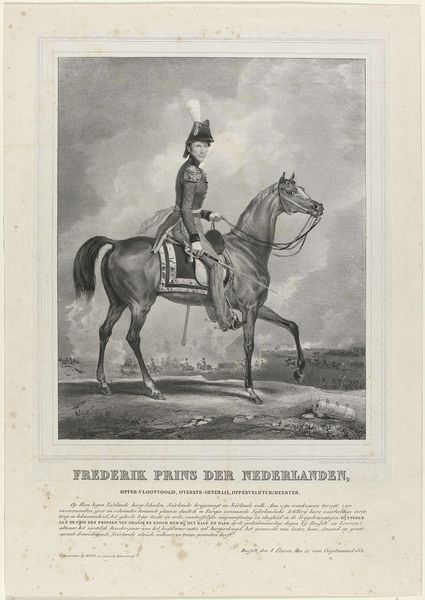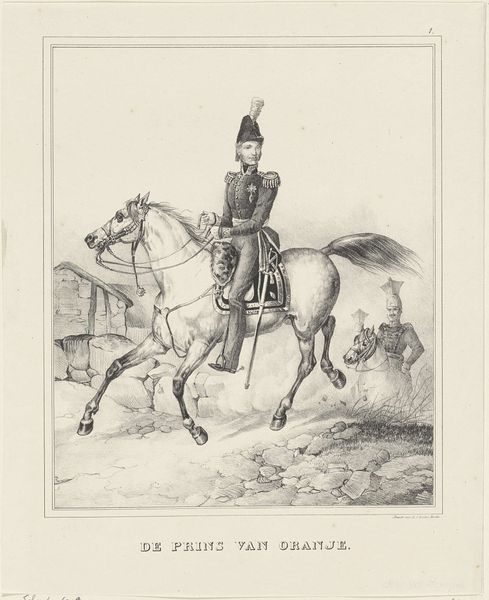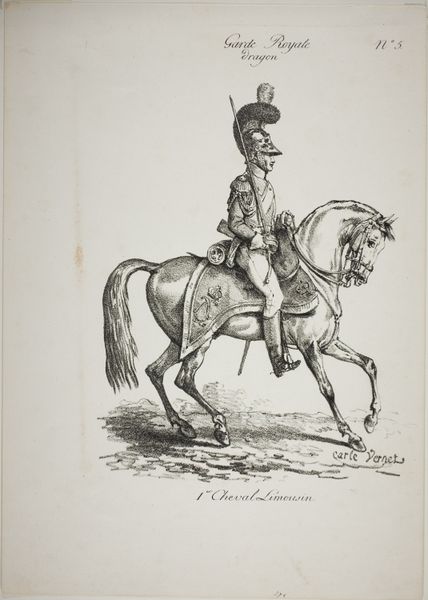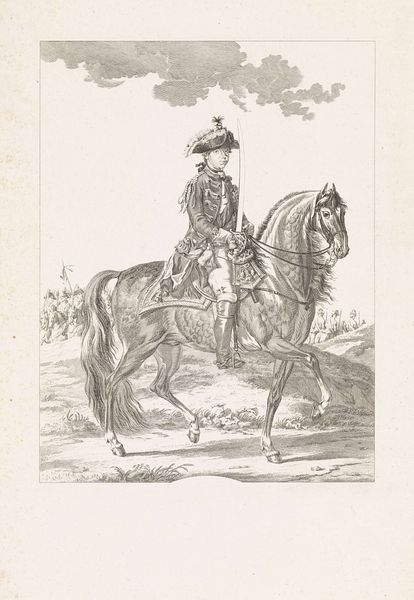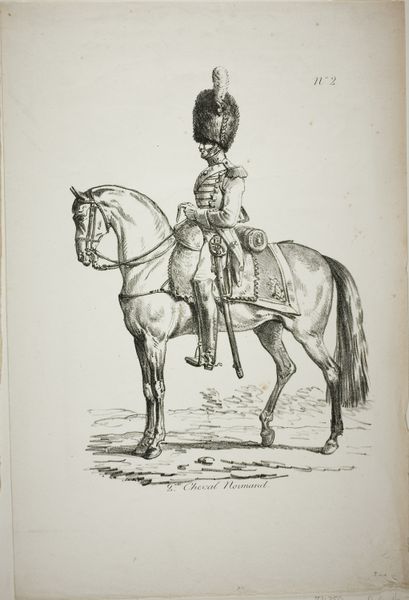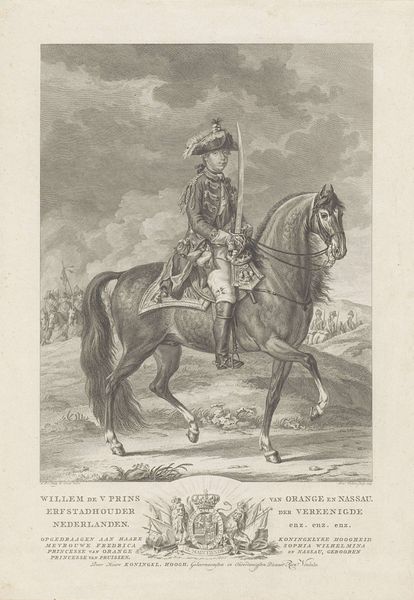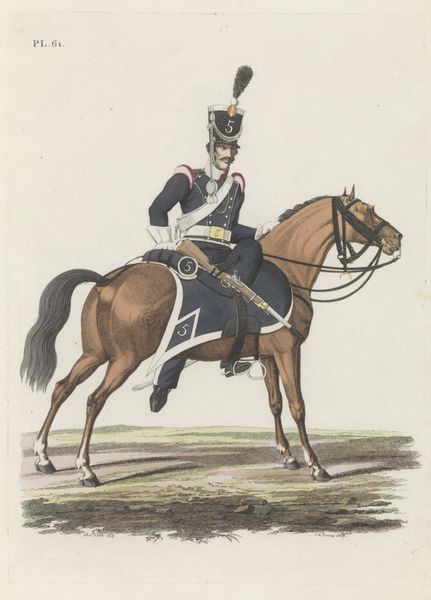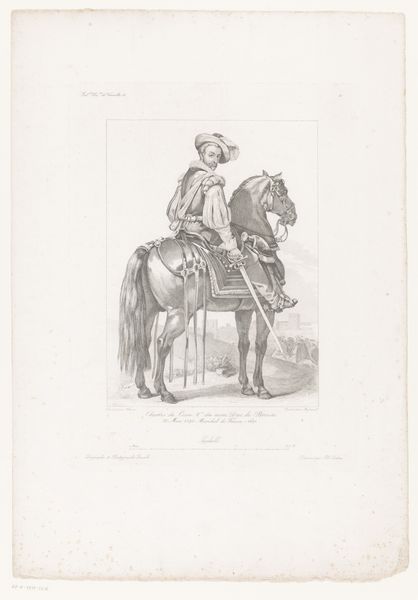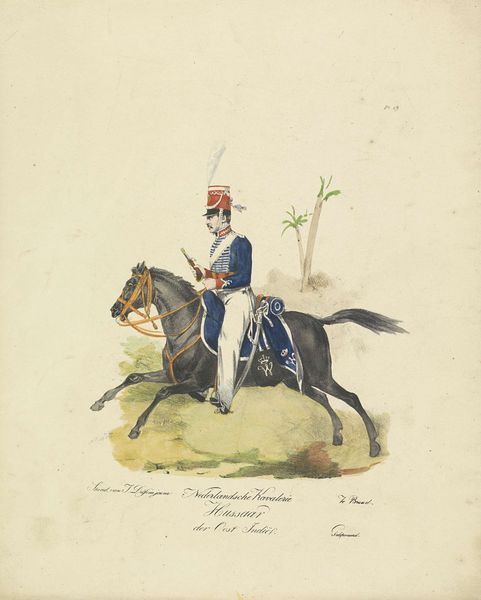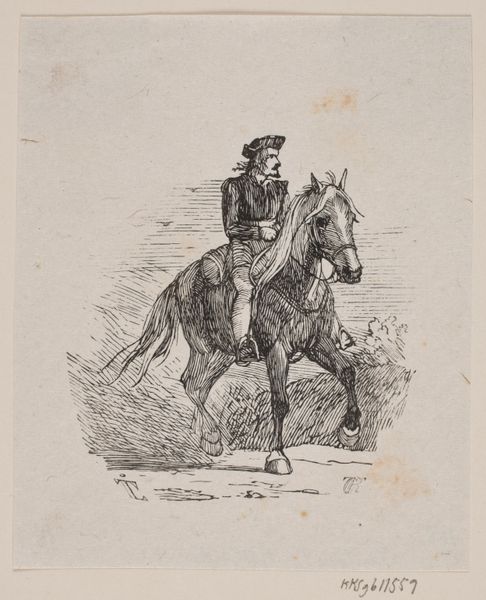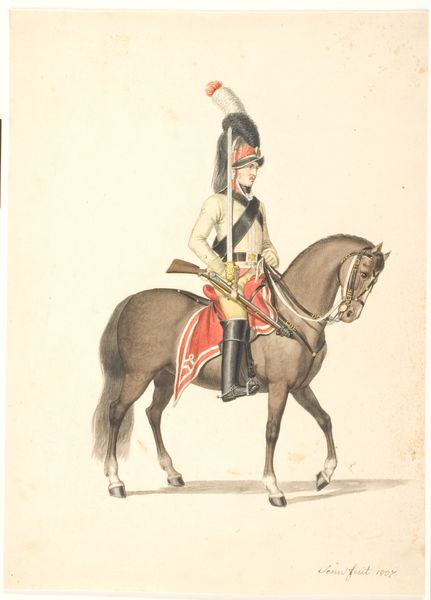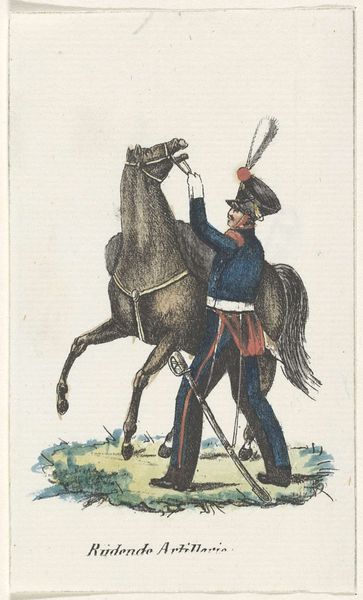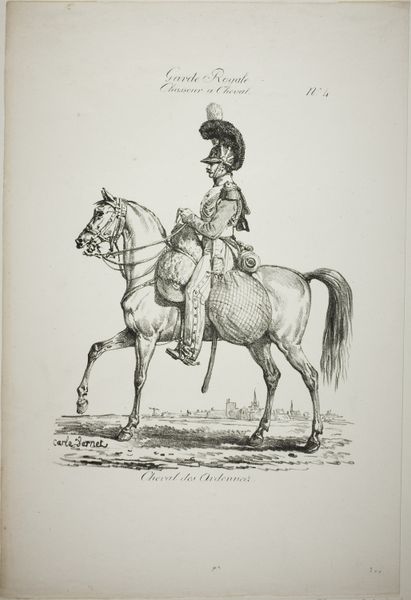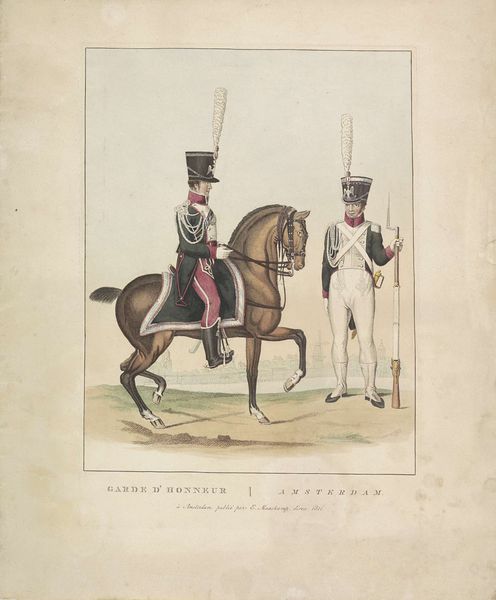
print, engraving
#
portrait
# print
#
old engraving style
#
landscape
#
figuration
#
history-painting
#
academic-art
#
engraving
Dimensions: height 358 mm, width 259 mm
Copyright: Rijks Museum: Open Domain
Curator: This engraving presents a dignified "Equestrian Portrait of Frederick, Prince of the Netherlands," dating roughly between 1816 and 1871. Editor: It certainly projects an aura of control and rigid formality, doesn't it? The almost grey tonality adds to the severity. The horse appears elegant and proud. Curator: These equestrian portraits were strategically employed throughout the 19th century. Consider the immense social and political weight such images carried, solidifying the image of powerful ruling figures in society. Prince Frederick is depicted not merely as a man, but as a leader intrinsically connected to the military apparatus. Editor: Absolutely. And what do you make of the almost obscured battle scene in the background? Is it meant to symbolize his leadership in military operations? I am curious to understand better its position. Does it work with or against the almost staged nature of the picture? Curator: The detail positions him within the narratives of nationhood and valor, reflecting back on historical accounts that were also deeply gendered and, for that period, specifically patriarchal. The engraving suggests his military accomplishments legitimize his position in the lineage. How is the power reflected here? Editor: He looks strangely young, almost innocent, and I am wondering, considering that this work is from the 19th century, if it doesn't have any link with the growing influence of the military apparatus, where positions were granted more on birth rights than on merit. Curator: I see your point about birthright, a common theme regarding how social dominance has been perpetuated in several European countries. Engravings such as this also played a key role in constructing collective memory and public consent. Editor: Yes. It’s almost propagandistic in that sense, very intentionally shaping perception through carefully curated visual symbolism and dissemination techniques. An idealized image that needs further consideration if one wants to truly appreciate the social landscape where such image thrived. Curator: Indeed. By analyzing this work through both its historical and contemporary resonance, we are better able to recognize its many implications. Editor: Precisely! Art reveals the intricacies of power through the complex dialogue between society and historical artifacts.
Comments
No comments
Be the first to comment and join the conversation on the ultimate creative platform.
